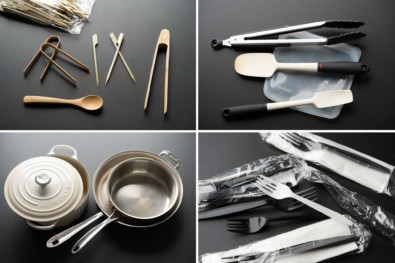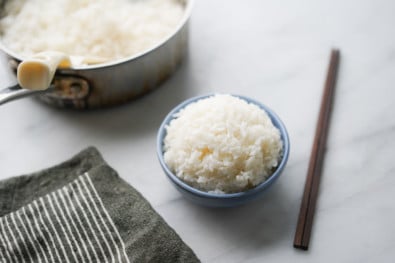Having the right tools can make cooking and food preparation much more enjoyable. Until I used a real chef’s knife that was sharpened, I didn’t even know what I was missing out on. And after discovering how much time a garlic press can save for large batches, I’m never going back.
For my 15+ years of being a home cook, many tools have come and gone. There are many fun and useful tools I use occasionally, but the list below is in my opinion, the best cooking utensils that I use every single day. If you’re interested in a more in-depth post about the non-toxic cooking utensils I use in the kitchen, read more about it on my post.
Disclaimer: As an Amazon Associate I may earn from qualifying purchases from links on this post, at no cost to you. This is not sponsored, all opinions are my own, and all these products are ones I use and love. And just to preface you, there are lots of OXO products here but it’s also not sponsored by them unfortunately!
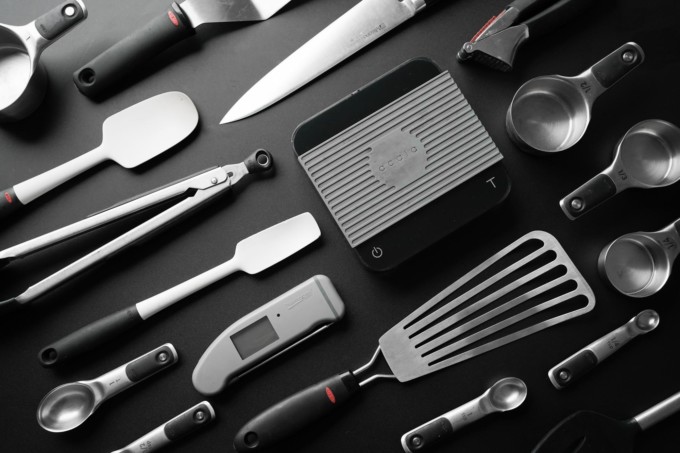
A good chef’s knife
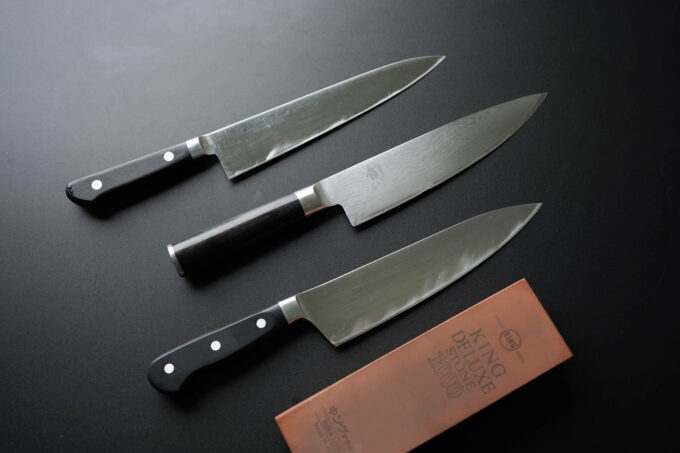
Having a good chef’s knife will transform the way you work. I can’t believe how many experienced home cooks I visit get by with very dull and abused knives. Having one you sharpen, hone, and keep in good shape makes everything easier.
It makes slicing steaks or roasts a cinch. I use mine to cut bread because I don’t like the extra crumbs created from serrated knives. Chef’s knives are indispensable for quick minces, chopping produce, prepping fruit, or opening ingredient packages.
I’ve had an 8” Classic Shun for over 15 years that I absolutely love. But I’ve also added a ton of lower cost 8” chefs knives to the arsenal. The little differences in weight, handle shape, and blade thickness makes a big difference in how it feels to use the knife.
I suggest going to a store that lets you try them out before you decide, or buying from a place that is ok with you exchanging or returning them. You don’t have to buy that exact knife, but look for one that is full tang and carbon steel for ease of maintenance.
Shown from top to bottom: 8.2″ Misono Gyutou, 8″ Classic Shun, 8″ Mercer Culinary, King Deluxe Stone 1000-grit
Cheap paring knives
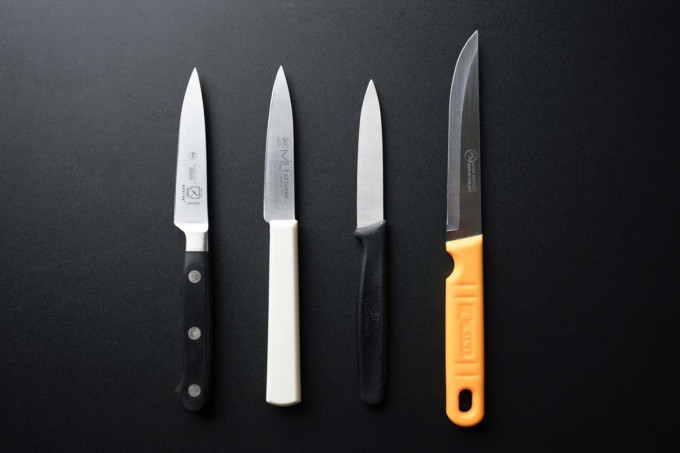
I love having a surplus of these to throw around. They’re great for quick-cutting jobs like cutting open packages, slicing fruit or cheese, meat, or whatever job you need to do.
They’re great because you can simply rinse them off and throw them in the dishwasher and not deal with carefully hand-washing your expensive chef’s knife when you just need to make a quick cut. They’re about $1 for Kiwi brand knives at Asian grocery stores which I love. I tried some multi-packs of 3-4” paring knives from Costco Business but find the shorter blade length to be less versatile.
Left to right: 3.5″ Mercer Culinary, MIU France paring knife, 3.25″ Victorinox, Kiwi
Epicurean cutting boards
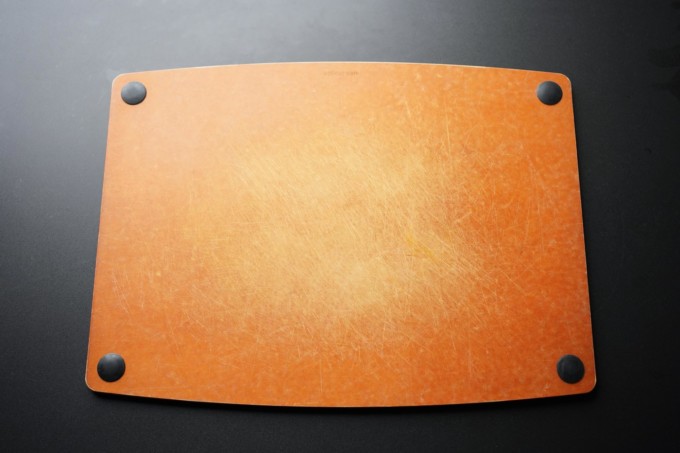
I don’t like dealing with plastic cutting boards that scrape and scar so easily from sharp chef knives since it leaves a rough surface. Wood cutting boards are fine, but my sink isn’t the largest so they’re a bit hard to fit there and wash. They’re also pretty heavy.
A great in-between I’ve found is from a brand called Epicurean. They make thin, but dense, and relatively light cutting boards made of compressed paper. The boards are super tough and don’t tear up as easily from sharp knives, and are lightweight so easy to wash in my small sink.
Similar to other boards, I don’t worry about them harboring bacteria since I can spray down with a disinfectant bleach or vinegar-based spray if I’m cutting any meat on the board. I love these things but you need to manually wash them since they can warp in the dishwasher.
I have three of these things. One is the original design without any silicone grips, but also one of their newer ones with silicone grips makes it much simpler to stabilize the board while cutting. My last one from them is an extra long board with a pig engraved. The engraving acts as a trough to catch any liquids while you’re cutting, like from meat or even juicy fruit like watermelon.
A digital kitchen scale
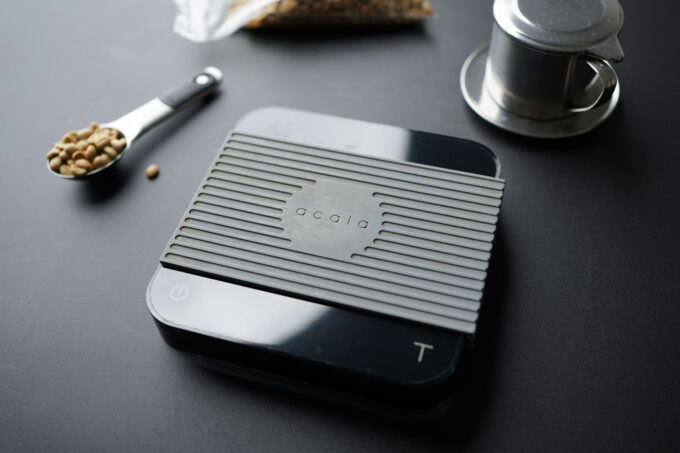
This is an extremely important tool to me. I of course use this daily to make espresso or pour over coffee for precision and predictability. The responsiveness and accuracy of my Acaia – Pearl scale is a must for coffee in my opinion. But there are many sub $30 kitchen scales that are also accurate down to the gram that works wonderfully for other recipes too. If you can, get one that’s accurate down to the tenth of a gram.
A scale is necessary for baking, but for me, it is also vital to have for all sorts of non-baked foods too. I know what it’s like trying to get recipes from mom or grandma with them telling you to add a pinch of this or a dash of that and of course you can get within range.
But when developing recipes for this blog, and when teaching someone who has never tasted the recipe they’re cooking, it doesn’t make sense for them to wing it like that. I find it particularly useful when re-cooking some of my recipes and scaling the recipe up or down.
If I have the weight measurement for something hard to measure volumetrically, like oyster sauce for garlic noodles, and I want to 4x that recipe for a party, it is WAY easier to throw that bowl on a scale and just weigh out the oyster sauce.
Dry & liquid measuring cups
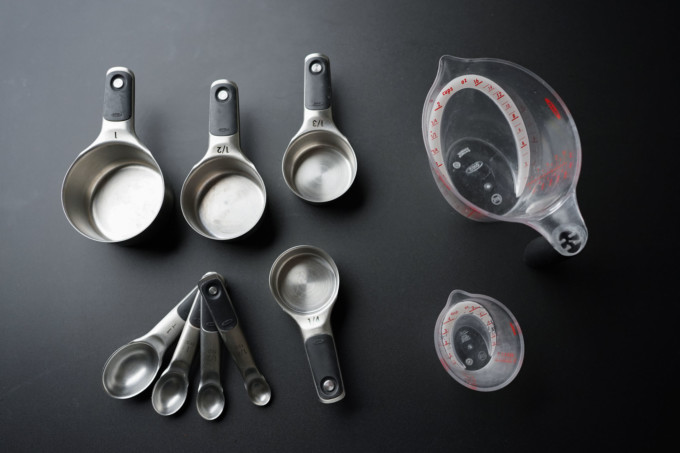
1 cup of milk in a dry measuring scoop is not the same as 1 cup of milk in a proper liquid measuring cup. If you want to follow or develop recipes you oughta know and abide by these differences.
For single batch foods, you may be able to wing it and get by, but if you’re scaling up recipes or want to develop a recipe, use the right tool for the job so you can be consistent with testing iterations, and when showing others how to cook something too.
The magnetic dry measuring cups from OXO I have are great for organization when not in use. And their elongated liquid measuring cups make it easier to read measuring labels and hit your measuring target. I have their 500ml cup and their baby 60ml one, perfect for measuring out a few tbsp of liquid at a time.
Instant-read thermometer
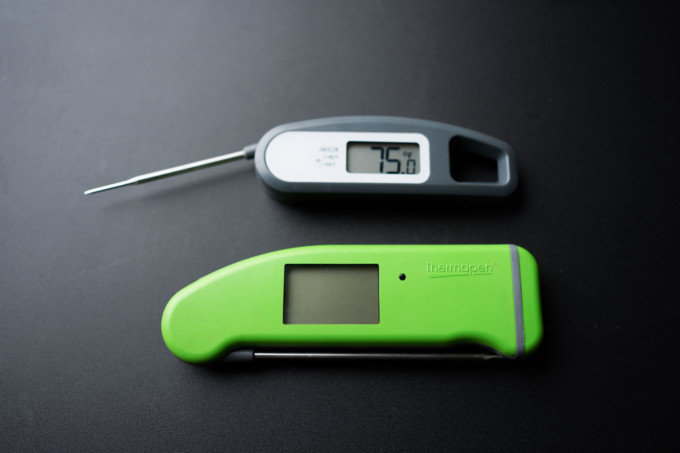
Having this kind of thermometer is incredibly helpful for repeatable results and for food safety. Luckily, high-quality instant-read thermometers are very affordable, fast, and accurate nowadays. I like to use a fancier, super accurate, and calibrated version from Thermoworks, but even sub $20 models like this one perform great too.
Unless your electric kettle already has a built-in thermometer, it’s impossibly difficult to get water to 195-205F for the perfect brew by guessing.
You could test a steak’s doneness by feel, but this takes a lot of experience and failed steaks to learn what that’s like compared to using a thermometer. This way you mess up fewer steaks and can still learn how the steaks should feel. And if you’re reverse-searing a steak at low temps for a few hours first, there’s no other way you’ll know if the internal temp has reached your target temp after 1-2 hours.
And if you’re making something like yogurt with live cultures, or bread with yeast, you need to hit a high enough temperature to keep the bacteria active, but not so high that it kills it. Again, you could learn those by touch, but it may result in failed attempts first to narrow that down.
Silicone spatulas
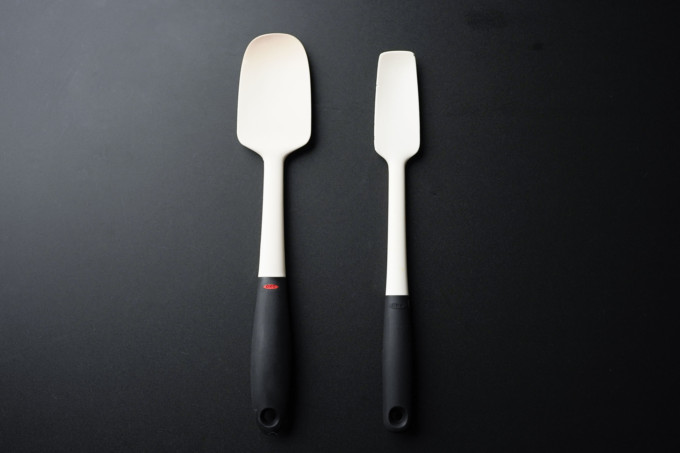
I’ve got a lot of these. The first ones I bought were way back when after hearing about them from Alton Brown–they were a standard-shaped spatula and a long one meant for jars. These held up incredibly well for over 15 years and I only swapped them out because they were food-stained.
I swapped them out for silicone spatulas from OXO. I love the slight cup shape of their standard one which makes scraping down bowls clean very easy. OXO also makes a skinnier one that works in jars like the Xyliss, except it has more square corners which makes scooping even cleaner in hard-to-reach spots.
These are great for prep work like mixing or transferring batters, sticky rice, but also work for cooking like quick sautes, eggs, soups, you name it.
Left: OXO silicone spoon spatula, Right: OXO jar spatula
Metal spatulas and turners
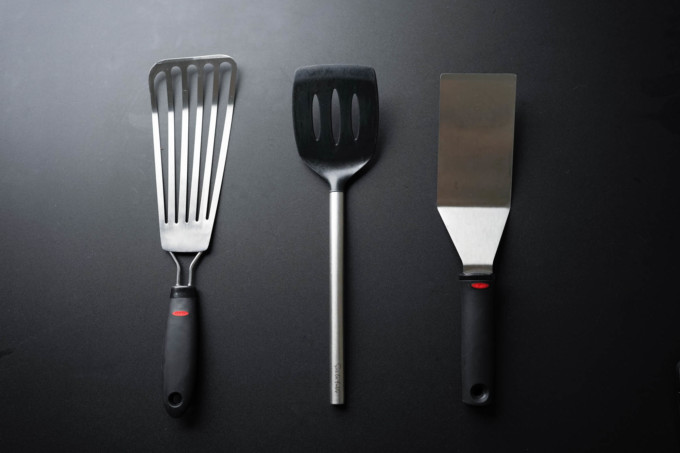
For sauteing or cooking anything in a large flat-bottomed saute pan there’s no faster way to maneuver food than with a spatula or turner.
If you’re flipping delicate stuff like fish or flipping a burger that you don’t want to break, these are great. For my cast iron, I love the added benefit of being able to scrape the pan a bit to dislodge food even if it’s pretty non-stick already.
Left to right: OXO fish turner, Sur La Table silicone slotted turner, OXO restaurant turner
Metal tongs & silicone-tipped tongs
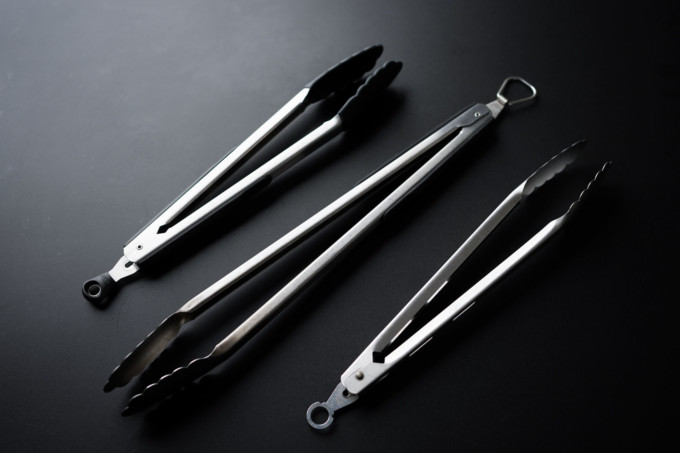
Tongs are great for when you need extra reach to move food around, but want to avoid getting burned by a hot oven, or splattering pan. I have about four of these on rotation that I chuck in the dishwasher after use.
Skip the super cheap ones because when the spring mechanism gives out they get really annoying. And the sliding square lock mechanism is a big pain to deal with. I love the designs that have the pull tab in the back to lock–although not all are high quality.
To no surprise, the spring and lock mechanism on all OXO tongs are excellent. 12” models are the most versatile in my opinion. Rarely do I wish I had a shorter 9” one. Longer ones are great for the BBQ.
Avoid plastic tipped ones as they are generally a sign of cheaper build, and if they melt, they introduce harmful toxins into your food. If you need it to be scratch-proof, get silicone-tipped ones for non-stick pans or your ceramic coated dutch ovens. However, the uncoated tips on steel tongs provide much better control and accuracy for grabbing food.
Left to right: OXO 12″ silicone tipped tongs, OXO 16″ grilling tongs
A garlic press
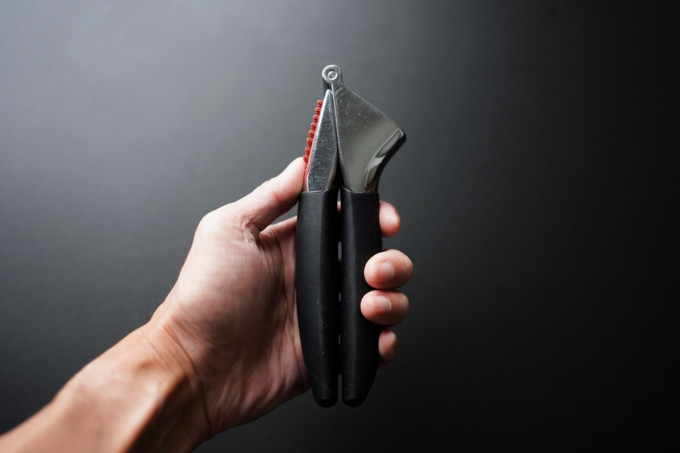
We eat a lot of garlic here and peeling garlic and mincing garlic manually is NOT a fun task. Having a tool to speed this up is a huge time saver.
The all-stainless steel models like the one sold at IKEA is better than not having one, but it’s not super comfortable to use, and the peels / garlic is a bit harder to clean out.
I like using the garlic press from OXO. It has large grippy handles that make pressing easier and less prone to slipping. And it has a grid of pokey spikes that clean out the holes the garlic is pressed through, making clearing stuck garlic a breeze.
Sheet pans & wire racks
Amazon: ½ sheet pan, ¼ sheet pan, ⅛ sheet pan
Sur La Table: ½ sheet wire rack, ¼ sheet wire rack
Sheet pans are a significant asset to any kitchen. We often use them for roasting, baking, frying, and as an overall work surface. It’s also helpful to use as a catch-all for prepping ingredients for mise en place because you can easily move all the ingredients around. Here are the industry size standards for sheet pans:
- full-size = 18” x 26”
- ⅔ size = 16” x 22”
- ½ size = 13” x 18”
- ¼ size = 9 ½ ” x 13”
- ⅛ size = 6 ½” x 9 ½”
However, these may change depending on the brand. Most home ovens have a harder time fitting full-size sheet pans because they’re made for industrial-sized kitchens. So our go-to sizes in our small kitchen are the ½ size (great for roasting vegetables or smashed potatoes) and ¼ size (for reheating foods) sheet pans. In our kitchen, we use aluminum sheet pans because we refrain from using non-stick-coated pans for health purposes.
Most wire racks also follow these measurements, and they should fit within each size of the sheet pan. We like using wire racks in the oven with a sheet pan for broiling or crisping ingredients like lechon kawali or reheating waffles. Wire racks are also useful for helping drain the excess oil off of fried foods like tempura shrimp.
One caveat about using wire racks is that they are quite annoying to clean, so we recommend soaking them upside down inside the sheet pan with a bit of dish soap and hot water for 10-20 minutes to loosen up the dirt. Then, use a scrubbing brush to remove the dirt.
The best kitchen utensils brand – OXO?
If you haven’t caught on from reading the above yet, I love OXO tools. I’m not sponsored (but would love to be OXO!), but they just make great stuff. The handle feel, usability, appearance, and the overall combination of those usually make OXO a winner.
I don’t love their slightly lower-end and jankier feeling knives and don’t love their kitchen scale design as much because there are pricier alternatives I prefer. But they aren’t bad tools.

